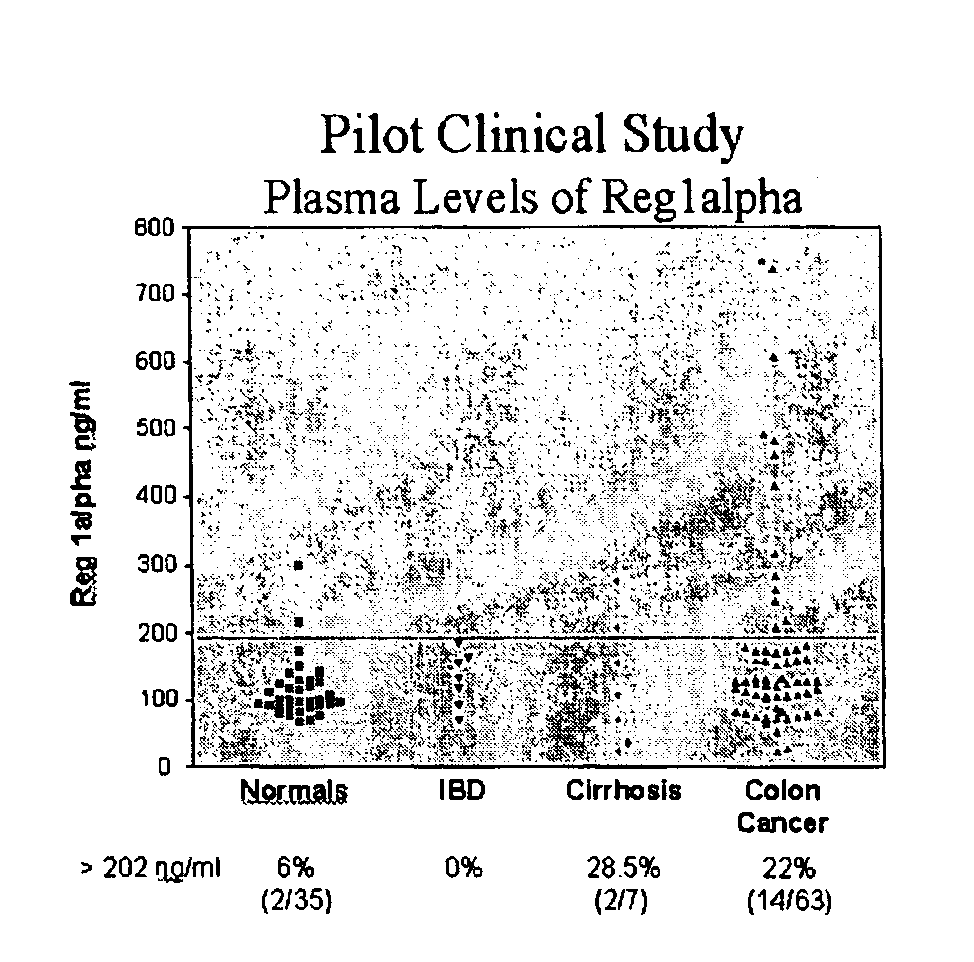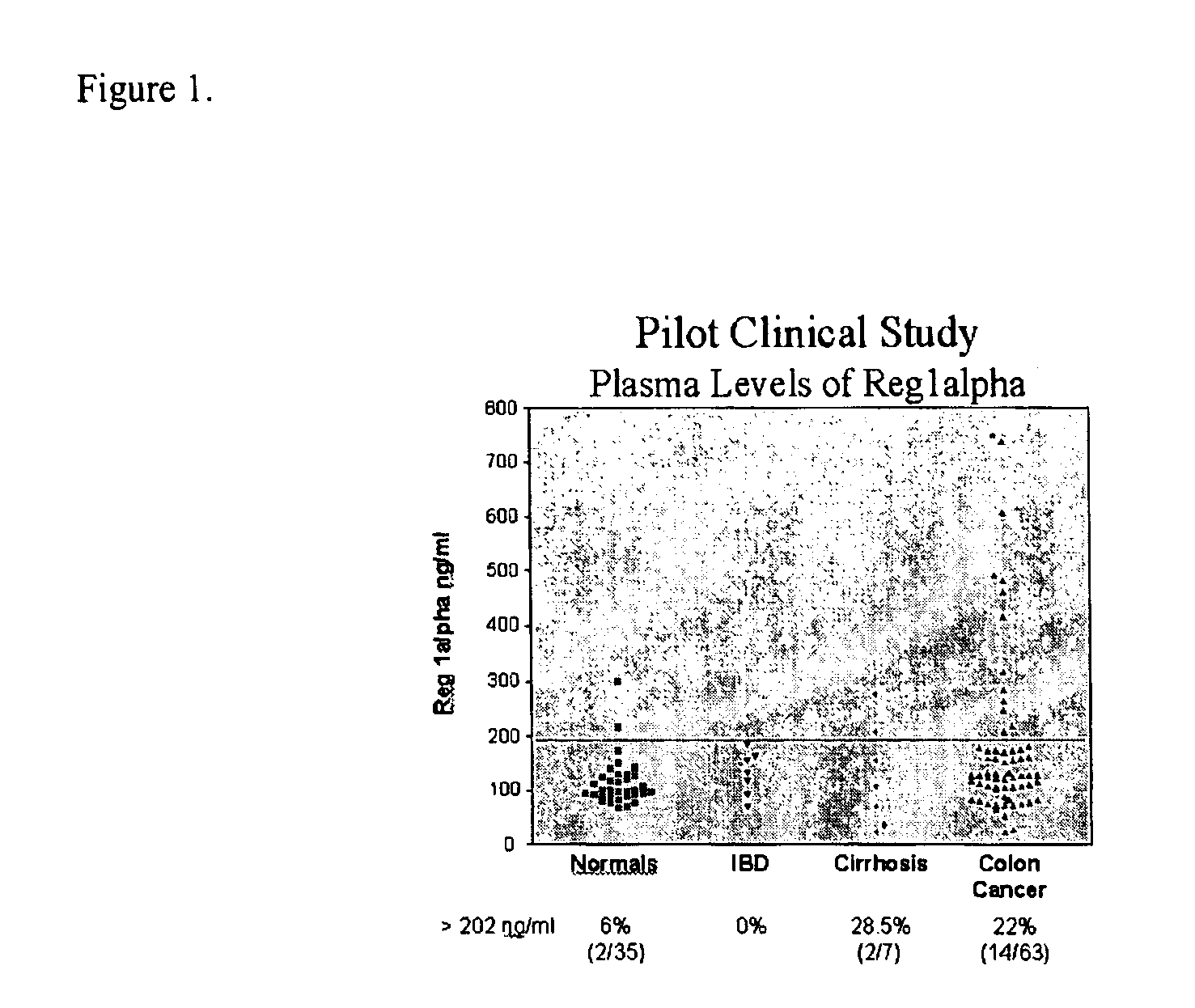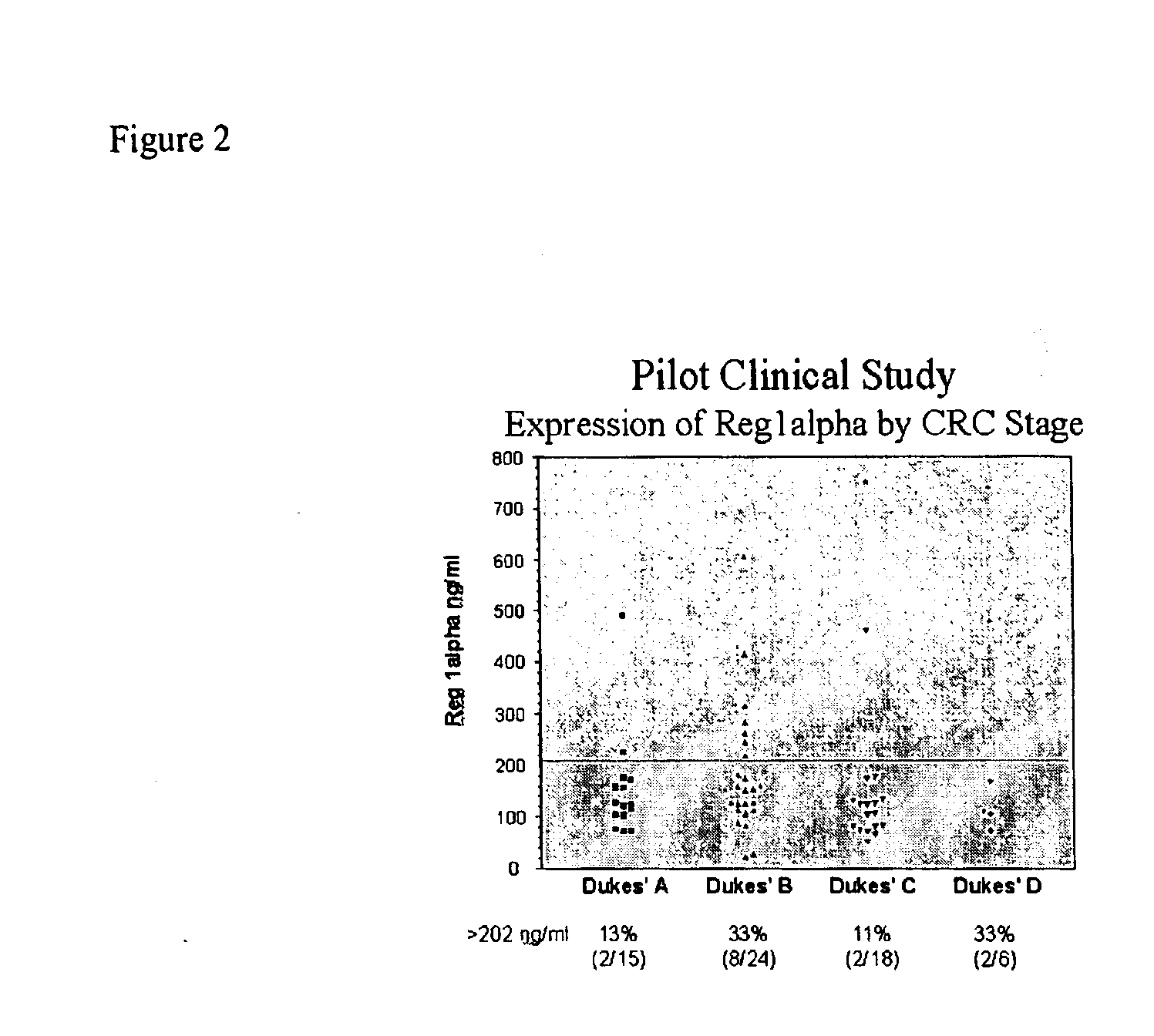Detection methods using timp1
a detection method and technology of timp1, applied in the field of detection methods using timp1, can solve the problems of inherently risky, uncomfortable, and expensive endoscopy, and achieve the effects of improving the safety of patients, reducing the risk of colorectal cancer, and improving the detection accuracy
- Summary
- Abstract
- Description
- Claims
- Application Information
AI Technical Summary
Benefits of technology
Problems solved by technology
Method used
Image
Examples
example 1
Generation of anti-Reg1α Antibodies
[0186]To generate antibodies to Reg1α, the full-length open reading frame of Reg1α (shown in either SEQ ID NO: 1 or 3) was directionally cloned into a mammalian expression vector, such as pcDNA3.1 / V5-His (Invitrogen), which includes C-terminal epitope and purification tags. The insert sequence was verified by dideoxy sequencing (see, for example, Ausubel et al., Current Protocols in Molecular Biology, John Wiley and Sons). Recombinant fusion protein was produced in a transient expression system in mammalian cells (e.g. CHO cells). The recombinant protein was purified from the cell culture supernatants by immobilized metal affinity chromatography (IMAC) by utilizing the C terminal His-tag. The sequence of the Reg1α protein used for the production of antibodies of the present invention is shown in either of SEQ ID Nos 2 or 4, all of which represent a functional Reg1α protein, and which are encoded by SEQ ID Nos 1 or 3, respectively. The purified, rec...
example 2
Detection of Reg1α in Colorectal Cancer Patient Serum Samples
[0187]The present invention relates to a method for the detection of colorectal cancer in an individual, which method includes the detection of Reg1α polypeptides in a serum sample from an individual with colorectal cancer, wherein the detection of Reg1α is indicative of the presence of colorectal cancer. Accordingly, Reg1α expression was measured in serum samples obtained from patients having been diagnosed with colorectal cancer.
[0188]All patients used in this study were diagnosed at their respective medical institutions by qualified physicians using conventional diagnostic means, including physical exam, blood analysis, imaging, and endoscopy. Once identified, patients provided informed consent through an IRB approved protocol. The severity of colorectal cancer in each patient was graded using the Dukes staging scheme. Serum samples were subsequently collected from each patient using methods known to those of skill in t...
example 3
Detection of Reg1α Nucleic Acid Sequence in Colorectal Cancer
[0189]In one embodiment, the present invention provides for a method of detecting the presence of colorectal cancer in a patient by detecting the presence of nucleic acid molecules encoding Reg1α in a serum sample obtained from a patient.
[0190]Serum may be obtained from a patient suspected of having colorectal cancer by methods described above and known to those of skill in the art. Nucleic acid molecules encoding Reg1α may be detected, for example, by Northern analysis. Briefly, probes for detection of Reg1α mRNA in a patient sample are derived by amplifying the Reg1α coding sequence by RT-PCR according to techniques known in the art. The cDNA fragments generated in this manner are subsequently cloned into a PCRII vector using the TA cloning kit (Invitrogen). The identity of each fragment can be verified by sequencing in each direction from the T3 and T7 polymerase sites present in the cloning vector. The cDNA molecules p...
PUM
| Property | Measurement | Unit |
|---|---|---|
| temperature | aaaaa | aaaaa |
| temperature | aaaaa | aaaaa |
| temperature | aaaaa | aaaaa |
Abstract
Description
Claims
Application Information
 Login to View More
Login to View More - R&D
- Intellectual Property
- Life Sciences
- Materials
- Tech Scout
- Unparalleled Data Quality
- Higher Quality Content
- 60% Fewer Hallucinations
Browse by: Latest US Patents, China's latest patents, Technical Efficacy Thesaurus, Application Domain, Technology Topic, Popular Technical Reports.
© 2025 PatSnap. All rights reserved.Legal|Privacy policy|Modern Slavery Act Transparency Statement|Sitemap|About US| Contact US: help@patsnap.com



